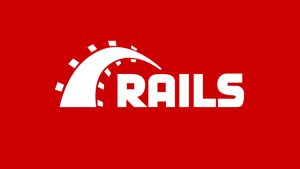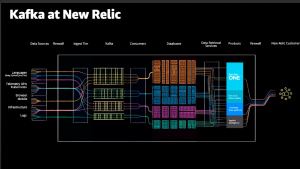The New Relic Observability for Good program gives nonprofits free and discounted access to our world-class observability platform, along with discounts for AI functionality and access to pro bono services. We talked with Peter Gault, founder and executive director of Quill.org, a nonprofit organization with a mission to help all students become strong writers and critical thinkers. In a recent Diginomica story, Quill.org shared details about how observability helps the team fulfill its mission. In this post, Peter shares his views on working with New Relic, the importance of open source, and opportunities for becoming part of the Quill community.

Peter Gault, Executive Director, Quill.org
New Relic: In a year that saw tremendous disruption and significant challenges as schools pivoted to distance learning, Quill was an invaluable resource for English language arts (ELA) teachers across the United States. Tell us about the rapid uptake Quill experienced.
Peter Gault: The sudden demand for online learning tools created a huge spike in new users. In less than six weeks, more than one million new students signed up for Quill, which was five times our normal usage compared to the previous year. As of the start of 2021, we had 3.8 million students using Quill to write and receive feedback on more than 540 million sentences. It’s really exciting for our small team of 27 folks to have such a large national impact.
New Relic: As a long-time customer of New Relic, the Quill team already had core aspects of observability in place going into 2020. How did New Relic help your organization deliver a great end-user experience despite the large spike in users?
Peter: As a small organization with limited resources, it’s great to have outside expertise helping to make sure that we are tracking the right things. So aside from assisting us in moving to New Relic One, New Relic was also extremely helpful by analyzing our data and helping us address issues such as slow queries. It was particularly useful to get another pair of eyes on our setup to make sure that we have all of the data monitoring we needed in place.
New Relic: Let’s step back a bit. Even before the pandemic, Quill’s automated feedback augmented the labor-intensive work of manually helping students build core writing skills, whether in the classroom or at home. Where did the idea for Quill originate?
Peter: It’s something I've been passionate about my entire life. I was extremely active in writing when I was younger. Writing op-ed pieces, for example, where I could take a position on an issue, explain my thinking, and address counter arguments, built my critical-thinking skills better than any course did. It was a hands-on way of learning. Building Quill was about giving students—all students—a way to gain these same writing skills.
New Relic: The open source and nonprofit communities have a great deal in common in terms of culture and purpose. What role does open source play in Quill’s mission?
Peter: From a technology perspective, the core Quill platform is all open source on GNU Affero Public License (AGPL) v3.0. But why we're open source is a little bit different than most open source projects. Quill is a software as a service (SaaS) platform where teachers and students use our tools on our website, rather than being an open source project where folks self-host our technology. We decided to be an open source platform so that volunteers who want to participate in the project can contribute code. This can be really valuable, for instance, for more junior programmers who are trying to build their resumes by contributing to open source projects. The open source community can be a great partner for nonprofits like ours. We've now had more than a hundred people contribute to our codebase. Obviously, we're very grateful for these contributions. Finally, the most critical aspect of our community is the teachers who work with us to inform the product.
New Relic: That sounds like Quill takes the concept of an open source community and extends it from writing code to informing the actual content of the product. How does that work?
Peter: For us, when we think about open source more broadly, it's about working together with your users and participating in shaping a product. We've built a number of channels to accomplish that. On the technical side, we do things like work with teacher advisory panels where we have advocate Quill teachers work with us to design new tools and content. On Slack, we have a community channel where people can jump in and share ideas. From an early stage in our development, we have been active in inviting contributors to share and making the sharing of ideas accessible.
New Relic: As Quill has grown in terms of products and users, how has your open source approach had to change?
Peter: Pulling in volunteers on the technology side has become more difficult as the code base has gotten more complex, with more moving parts, which means that we need to constantly evolve our approach to volunteering efforts as well.
New Relic: For those readers who might be interested in volunteering, what types of skills does Quill need the most right now?
Peter: One of the exciting things right now in the ed tech space is the growth in natural language processing (NLP) technology. For Quill, the two key open source technologies that we use for this are spaCy and BERT. We’d love to connect with folks who know these tools well.
Also, we have a Ruby on Rails stack, so we appreciate Rails experts willing to lend us a hand. For instance, it’s helpful for us to get thoughts on things like how an API should be structured or architected in Rails.
New Relic: Finally, tell us a little bit about where Quill is going from here?
Peter: There are two big things coming down the pipeline that we're very excited about. The first is that we're developing a new tool to build writing and critical thinking skills by using AI to analyze the student's evidence and logic. This represents a big transition from focusing on more basic aspects of writing, to focusing on whether the student understands the passage and the key ideas. That product will launch this year.
The second project is a series of APIs that focus on language. Our hope is to open source them to invite people into our work on the machine learning side.
Overall, with our core platform, we hope to serve 10 million low-income students in the next five years.
Próximos passos
Interested in helping Quill help students? Find the Quill.org open source report here. You can also send an email to opensource@quill.org and share what you’re interested in.
As opiniões expressas neste blog são de responsabilidade do autor e não refletem necessariamente as opiniões da New Relic. Todas as soluções oferecidas pelo autor são específicas do ambiente e não fazem parte das soluções comerciais ou do suporte oferecido pela New Relic. Junte-se a nós exclusivamente no Explorers Hub ( discuss.newrelic.com ) para perguntas e suporte relacionados a esta postagem do blog. Este blog pode conter links para conteúdo de sites de terceiros. Ao fornecer esses links, a New Relic não adota, garante, aprova ou endossa as informações, visualizações ou produtos disponíveis em tais sites.




